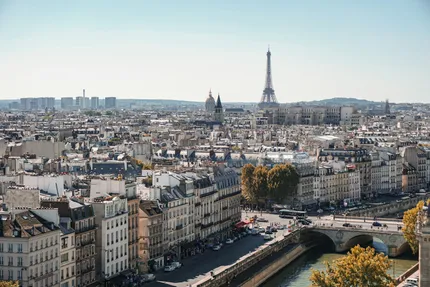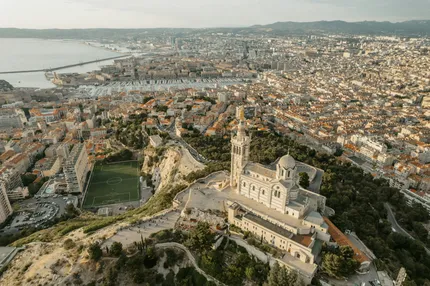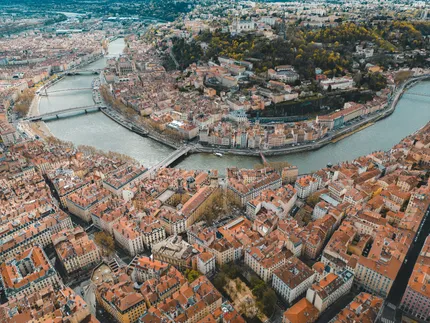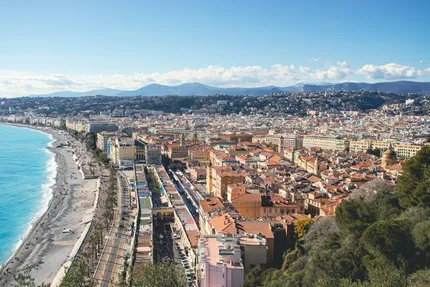CityTouring
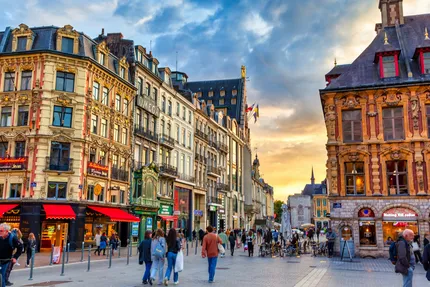
City trip to Lille
FranceAt the crossroads of French and Flemish culture, Lille blends ornate 17th‑century brickwork with contemporary energy. Start on Grand-Place (Place du Général-de-Gaulle), framed by gabled façades and the elegant Vieille Bourse, whose inner courtyard hosts second‑hand book stalls and chess players. Wander Vieux‑Lille’s cobbled lanes to the Hospice Comtesse museum and independent boutiques, then contrast it with the bold lines of Euralille, the business and shopping district designed by star architects. Art anchors the city: the Palais des Beaux‑Arts holds one of France’s richest collections outside Paris, and LaM in nearby Villeneuve‑d’Ascq adds modern and outsider art.
For air and greenery, loop around Vauban’s star‑shaped Citadelle and its park, or browse the riotous Wazemmes market on Sunday. Evenings revolve around convivial estaminets serving carbonnade flamande, maroilles‑topped dishes, and northern beers, alongside contemporary bistros and craft bars. Cultural programming runs year‑round at Gare Saint‑Sauveur and the ornate opera house, while canal‑side paths offer relaxed strolls and cyclists' routes. Thanks to two central stations with high‑speed links to Paris, Brussels, London, and Amsterdam, Lille is an easy, compact base for a culture‑and‑food‑focused city break.
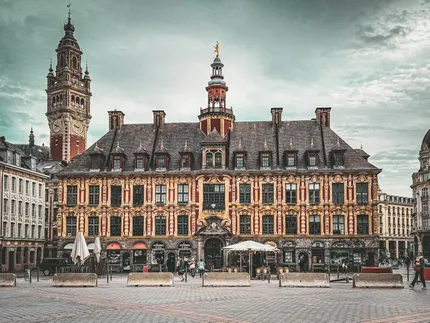
Grand Place (Place du Général‑de‑Gaulle)
Central square framed by ornate Flemish facades, the Théâtre du Nord, and the striking Goddess column. It’s Lille’s main meeting point, hosting markets and events throughout the year. Sit at a café terrace, people‑watch, and admire nearby Vieille Bourse. Great starting point for exploring Vieux Lille and capturing classic city views.
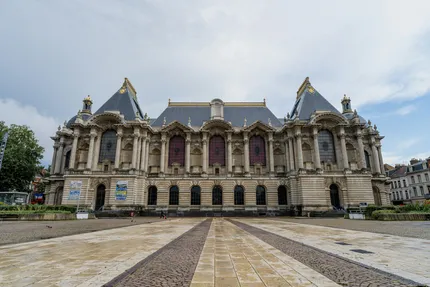
Palais des Beaux‑Arts de Lille
One of France’s largest fine‑arts museums, housed in a grand 19th‑century palace. Collections span European masters like Rubens, Goya, Delacroix, Monet, and sculptures by Rodin. Don’t miss the fascinating plans‑reliefs of fortified towns. Clear labeling, thoughtful layouts, and strong temporary exhibitions make it an essential cultural stop in Lille. Allow plenty of time.
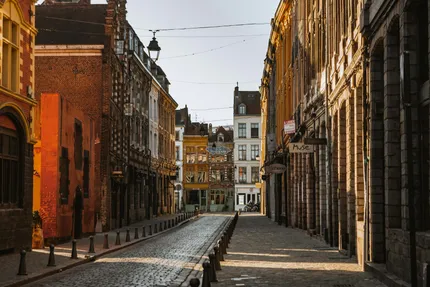
Vieux Lille (Old Town)
Atmospheric old quarter of cobbled lanes and gabled brick‑and‑stone houses. Browse independent boutiques and design stores, then refuel in cozy estaminets with Flemish specialities, waffles, and local beer. Visit Meert for historic pâtisserie, peek into art galleries, and admire restored façades around Rue de la Monnaie and Place aux Oignons.
Lille suits travelers who like dense, walkable neighborhoods with plenty to see over two or three days. Art enthusiasts get strong value: the Palais des Beaux‑Arts is second only to Paris in France, LaM adds modern and outsider art a short metro ride away, and La Piscine in nearby Roubaix presents design and sculpture in a spectacular former Art Deco pool. Architecture and urbanism fans will appreciate Flemish‑style façades in Vieux‑Lille, Vauban’s star fort and moat, and the contemporary statement of Euralille. Food‑minded visitors who enjoy hearty regional cooking, cheese, beer, and daily markets will find estaminets, microbreweries, and Wazemmes’ produce and spice stalls highly rewarding. Families can combine compact sights with outdoor time at the Citadelle park, the small city zoo next door, and interactive spaces at Gare Saint‑Sauveur.
Bargain hunters and vintage lovers should time a visit for the Braderie de Lille in early September. Night owls will gravitate to bars along Rue de Solférino and around Place de la République. Cyclists benefit from V’Lille bike‑share and flat canal‑side routes toward the Deûle parklands. Thanks to fast trains and modest prices, Lille is particularly good for budget‑conscious weekenders from Paris, Brussels, London, or Amsterdam seeking an easy cultural break without long transfers. Shoppers can browse independent fashion and design in Vieux‑Lille, plus the large Westfield Euralille mall between the two stations. Football supporters can catch a LOSC match at Decathlon Arena – Stade Pierre‑Mauroy via metro.
Three top reasons for a city trip to Lille
- Wander Vieux-Lille's cobbled lanes, admire Flemish gabled townhouses, Grand-Place and Vieille Bourse, peek into courtyards, and feel Lille's Franco-Flemish heritage in lively squares, terraces, and ornate brick-and-stone facades, hidden passages.
- Explore Palais des Beaux-Arts' vast collections, contemporary and modern masterpieces at LaM, elegant La Piscine in Roubaix, and Musee de l'Hospice Comtesse; immerse in Lille3000 events and vibrant street art.
- Savor hearty estaminet classics: carbonnade flamande, potjevleesch, and maroilles tart, alongside ales; queue for Meert waffles, browse Wazemmes market's spices and cheeses, then toast apero on buzzing Place Rihour terraces.
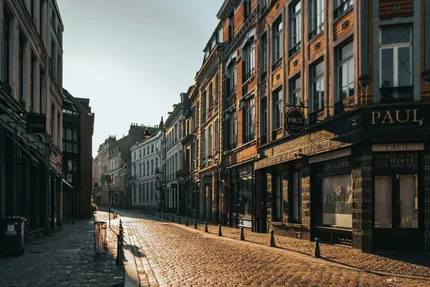
Best time to visit Lille
Lille has a temperate oceanic climate, with frequent light rain and mild swings in temperature. The sweetest windows are April–June and September–October, when days are comfortable for walking markets and museum‑hopping, café terraces buzz, and parks around the Citadelle are green. Early September brings the Braderie de Lille, Europe’s biggest flea market, a festive weekend that also fills hotels far in advance. December adds a cozy Christmas market and illuminations without the crowds of bigger cities. July–August can be sunny but occasionally hot and quieter as some independents take holidays; winter is cool and damp, so pack layers and waterproofs.
More activities and things to see in Lille:
Vieille Bourse (Old Stock Exchange)
Magnificent 17th‑century Old Stock Exchange encircling a tranquil courtyard. Its richly carved Flemish Renaissance façades reward close inspection. By day, browse secondhand books, vintage prints, and posters under arcades; locals play chess nearby. Seasonal events and occasional dance evenings enliven the space. Steps from Grand Place, it’s easy to combine.
Citadelle de Lille and Bois de la Citadelle
Vauban’s star‑shaped 17th‑century citadel anchors Lille’s largest green space. While the military site is restricted, encircling ramparts, moats, and paths invite scenic walks or runs. Explore the Bois de la Citadelle, playgrounds, and canals along the Deûle. Combine with the adjacent free Lille Zoo for a relaxed, family‑friendly outing. Pack a picnic.
Cathédrale Notre‑Dame‑de‑la‑Treille
Contemporary cathedral completed in the 1990s, notable for its translucent marble façade that glows from within. The interior blends neo‑Gothic elements with modern art and stained glass. Visit the crypt’s small sacred‑art museum, and step outside to appreciate the dramatic contrast between the austere exterior and Vieux Lille’s historic streets.
Beffroi de l’Hôtel de Ville
UNESCO‑listed belfry rising 104 meters beside Lille’s Art Deco city hall. Take the elevator and stairs to the viewing platform for sweeping views over rooftops, the citadel, and Flanders’ flat landscapes. Exhibits outline belfry heritage and municipal history. Time your visit for clear weather; ticketed entry with limited capacity. Hours vary.
Marché de Wazemmes
One of northern France’s liveliest markets, filling Place de la Nouvelle Aventure with produce, cheeses, spices, textiles, and street food. Sunday is busiest; Tuesdays and Thursdays are smaller. Expect multilingual banter, sharp prices, and buskers. Arrive early, then explore Wazemmes’ cafés and North African bakeries nearby. Watch your belongings in crowds.
LaM – Lille Métropole Museum of Modern, Contemporary and Outsider Art
LaM, set in a leafy sculpture park in Villeneuve‑d’Ascq, unites modern, contemporary, and outsider art. Collections feature Picasso, Modigliani, Léger, Dubuffet, and a major art brut ensemble. Outdoor works invite a stroll. Reachable by metro plus a short walk. Combine with nearby Parc du Héron for nature and birdlife. Cafeteria and bookstore onsite.
Gare Saint Sauveur
Revitalized former freight station hosting free exhibitions, festivals, film nights, and family activities. Industrial halls and courtyards create a relaxed cultural hub with seasonal terraces and a popular bar. Programming changes frequently, mixing contemporary art, design, and community events. Close to the center, it’s easy to pair with nearby attractions.
Braderie de Lille
Europe’s biggest flea market, held the first weekend of September, draws millions of visitors and thousands of stalls across the city. Hunt for antiques, vinyl, and curios; negotiate prices. Restaurants serve mountains of mussels and fries, piling shells outside. Expect road closures, packed hotels, and an energetic, festive atmosphere across neighborhoods.
Musée de l’Hospice Comtesse
Atmospheric museum set in a 13th‑century hospital founded by Countess Jeanne. Cloisters, timbered wards, and kitchens display Flemish furniture, tapestries, and ceramics, illustrating civic life and care through centuries. Exhibits are manageable and well‑signed, with occasional temporary shows. The complex offers a peaceful pause amid Vieux Lille’s boutiques and cafés.
Getting around in Lille
Central Lille is compact and very walkable, especially Vieux-Lille and the Euralille area. Cycling is efficient on growing protected lanes; V'Lille bike-share docks are widespread and e-bikes are available. Public transport, run by Ilevia, is the fastest way across the metro area: two driverless metro lines (A and B) run every few minutes, the historic Mongy tram links Lille with Roubaix and Tourcoing, and a dense bus network fills the gaps. A Pass Pass card or day passes cover metro-tram-bus, with simple transfers. Taxis and ride-hailing are easy to find at stations and major squares. Parking is limited and ring roads clog at peak times; a car is unnecessary for the city core but helpful for countryside trips. Several park-and-ride sites sit on metro and tram lines. At night, selected bus lines and the metro run late on weekends, but plan ahead. Accessibility is good on metro and trams; older streets may be cobbled and narrow.
Getting to Lille
Lille Airport (LIL) sits about 7 km south of town, with a frequent shuttle to Lille Flandres/Euralille. It serves mainly domestic French routes and select European and North African destinations; for long-haul networks, use Paris Charles de Gaulle (CDG) or Brussels (BRU), both reachable in about 1-2 hours by train (direct TGV to CDG; to BRU via Brussels-Midi). Rail is Lille's strength: Lille Flandres and Lille Europe stations are a short walk apart. TGV high-speed trains link Lille to Paris (about 1 hour) and many French cities (Lyon, Marseille, Bordeaux, Strasbourg), and to Belgium (Brussels about 40 minutes), with easy onward connections to Amsterdam and Germany. London is possible with one change in Brussels or Paris. Regional TER trains cover northern France and the Opal Coast. Long-distance buses (FlixBus, BlaBlaCar Bus) run from the Lille Europe terminal to Paris, Brussels, Amsterdam, London, Cologne and more; fares are low but journeys are longer. Reserve ahead on busy weekends and holidays.
